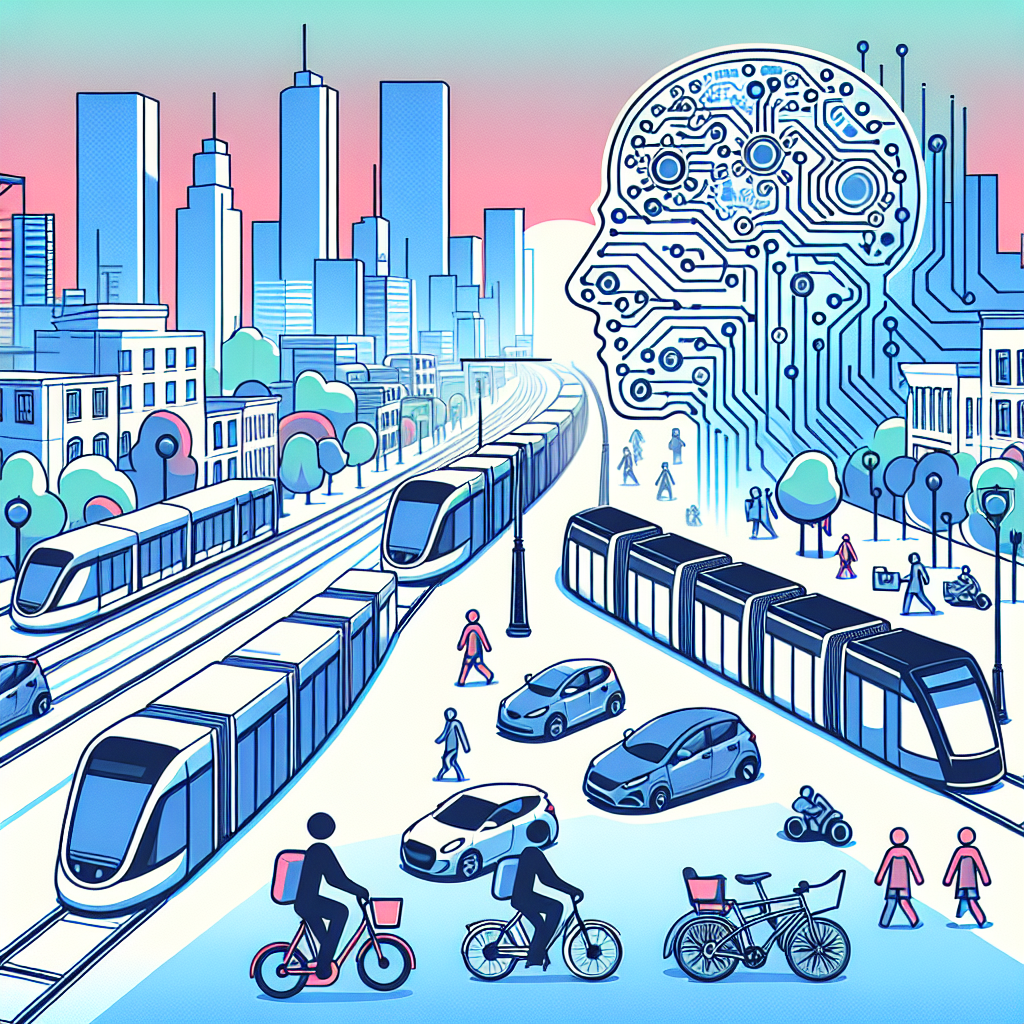In recent years, there has been a growing interest in using artificial intelligence (AI) to improve sustainable urban mobility. With the rise of smart cities and the increasing focus on reducing carbon emissions and congestion, AI applications are playing a crucial role in transforming the way people move around cities. From traffic management to public transportation optimization, AI is being used to create more efficient, environmentally-friendly, and user-centric transportation systems.
One of the key areas where AI is making a significant impact is in traffic management. Traditional traffic management systems rely on fixed timing for traffic signals and are not able to adapt to changing traffic conditions in real-time. AI-powered traffic management systems, on the other hand, use data from sensors, cameras, and other sources to analyze traffic patterns and make adjustments to traffic signals in real-time. This allows for better traffic flow, reduced congestion, and improved air quality.
Another important application of AI in sustainable urban mobility is in public transportation optimization. AI algorithms can analyze data on passenger demand, traffic patterns, and other factors to optimize routes, schedules, and fleet management for public transportation systems. This not only improves the efficiency of public transportation but also makes it more attractive to users, leading to a shift away from private car use and reducing congestion and carbon emissions.
AI is also being used to improve the user experience of urban mobility. For example, AI-powered apps can provide real-time information on public transportation options, including schedules, routes, and delays. This helps users plan their journeys more efficiently and encourages them to use public transportation instead of driving. AI can also be used to personalize transportation services based on individual preferences and needs, making urban mobility more convenient and accessible for all.
In addition to these applications, AI is also being used to develop new forms of sustainable urban mobility, such as autonomous vehicles and ride-sharing services. Autonomous vehicles use AI algorithms to navigate roads, interact with other vehicles, and make decisions in real-time, leading to safer and more efficient transportation. Ride-sharing services use AI to match passengers with drivers and optimize routes, reducing the number of empty cars on the road and decreasing overall emissions.
Overall, AI applications in sustainable urban mobility have the potential to revolutionize the way people move around cities, making transportation more efficient, environmentally-friendly, and user-centric. As cities continue to grow and face increasing challenges in terms of congestion and pollution, AI will play an increasingly important role in shaping the future of urban mobility.
FAQs:
Q: How does AI help reduce congestion in cities?
A: AI-powered traffic management systems analyze real-time data on traffic patterns and adjust traffic signals to optimize traffic flow, reducing congestion and improving air quality.
Q: Can AI help improve public transportation services?
A: Yes, AI algorithms can analyze data on passenger demand, traffic patterns, and other factors to optimize routes, schedules, and fleet management for public transportation systems, making them more efficient and user-friendly.
Q: How does AI contribute to the development of autonomous vehicles?
A: AI algorithms are used in autonomous vehicles to navigate roads, interact with other vehicles, and make decisions in real-time, leading to safer and more efficient transportation.
Q: What are some examples of AI-powered urban mobility apps?
A: Examples of AI-powered urban mobility apps include real-time public transportation information apps, ride-sharing services, and route optimization apps for cyclists and pedestrians.
Q: How can AI personalize transportation services for users?
A: AI algorithms can analyze data on individual preferences and needs to personalize transportation services, such as suggesting alternative routes or modes of transport based on user preferences.

